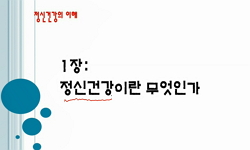Thise ssay introduces 〈Gwanhaerok〉, a collection of lyrics that has been recently excavated. 〈Gwanhaerok〉is a work of so-called ‘gyubang-gasa’, or “the lyrical literature of women’s quarters”, in the romantic style marked by elegant ...
http://chineseinput.net/에서 pinyin(병음)방식으로 중국어를 변환할 수 있습니다.
변환된 중국어를 복사하여 사용하시면 됩니다.
- 中文 을 입력하시려면 zhongwen을 입력하시고 space를누르시면됩니다.
- 北京 을 입력하시려면 beijing을 입력하시고 space를 누르시면 됩니다.

〈관해록〉의 가사 발굴과 〈관동해가〉와의 비교 = A New Discovered of 〈Gwanhaerok〉and Comparing It to 〈Gwandonghaega〉
한글로보기https://www.riss.kr/link?id=A99604003
- 저자
- 발행기관
- 학술지명
- 권호사항
-
발행연도
2012
-
작성언어
-
-
주제어
규방가사 ; 풍류형 ; 동체이명 ; 유재하 ; 가사 개작 ; 황산별곡 ; gyubang-gasa ; Yu Jae-ha ; adaptation ; travel gasa ; Hwang-sanbyeolgok
-
KDC
810
-
등재정보
KCI등재
-
자료형태
학술저널
- 발행기관 URL
-
수록면
117-143(27쪽)
-
KCI 피인용횟수
1
- 제공처
-
0
상세조회 -
0
다운로드
부가정보
다국어 초록 (Multilingual Abstract)
Thise ssay introduces 〈Gwanhaerok〉, a collection of lyrics that has been recently excavated. 〈Gwanhaerok〉is a work of so-called ‘gyubang-gasa’, or “the lyrical literature of women’s quarters”, in the romantic style marked by elegant and learned expressions of a group of female narrators remarking on the land scapes and impressions that they encounter while traveling along the East Coast of Korea. Historians estimate that the book was composed sometime around the nineteenth century, in the late Joseon period. 〈Gwandonghaega〉is a dongche-yimyeong, i.e., much of the same work with a different title. The two collections of lyrics, in other words, share quite a similar form and structure, with the only exception being the fact that 〈Gwanhaerok〉contains 60 phrases or so more than 〈Gwandonghaega〉. No author has been identified for 〈Gwanhaerok〉,nor has a different version or edition been found. It remains to be determined which of the two collections precedes the other. For the purpose of this essay, I assume that 〈Gwanhaero〉is the later and more expanded take on 〈Gwandonghaega〉,〈Gwanhaerok〉provides a significant clue for tracing the evolution of lyrics as a literary genre through the late Joseon period. The collection also contains a number of unique words that are no longer used in the Korean language.
참고문헌 (Reference)
1 박을수, "한국시조대사전(별책보유)" 아세아문화사 2007
2 "한국국학진흥원"
3 박재연, "필사본고어대사전(7책)" 선문대학교 중한번역문헌연구소/학고방 2010
4 김성배, "주해가사문학전집" 집문당 1961
5 이상보, "주해가사문학전집" 집문당 1981
6 임기중, "역대가사문학집성"
7 이색, "목은시고 1권, 觀魚臺小賦 幷序"
8 황문환, "됴야긔문의 어휘적 고찰, In 됴야긔문 연구" 한국학중앙연구원 2007
9 홍윤표, "근대국어연구(1)" 태학사 1994
10 이광호, "근대 국어 문법론" 태학사 2004
1 박을수, "한국시조대사전(별책보유)" 아세아문화사 2007
2 "한국국학진흥원"
3 박재연, "필사본고어대사전(7책)" 선문대학교 중한번역문헌연구소/학고방 2010
4 김성배, "주해가사문학전집" 집문당 1961
5 이상보, "주해가사문학전집" 집문당 1981
6 임기중, "역대가사문학집성"
7 이색, "목은시고 1권, 觀魚臺小賦 幷序"
8 황문환, "됴야긔문의 어휘적 고찰, In 됴야긔문 연구" 한국학중앙연구원 2007
9 홍윤표, "근대국어연구(1)" 태학사 1994
10 이광호, "근대 국어 문법론" 태학사 2004
11 권영철, "규방가사연구" 이우출판사 1980
12 이기문, "국어사개설" 탑출판사 1972
13 "관해록, 한글필사본(두루마리)"
14 "관동해가, 한글필사본"
15 옥영정, "陶南 소장 고서의 書誌的 분석" 한국고전문학회 (27) : 191-230, 2005
16 박재연, "中朝大辭典(9책)" 중한번역문헌연구소 /선문대학교 출판부 2002
17 구사회, "<황산별곡>의 작자 의도와 문예적 검토" 한국언어문학회 (59) : 161-182, 2006
동일학술지(권/호) 다른 논문
-
- 한국언어문학회
- 조창규(Jo, Chang-gyu)
- 2012
- KCI등재
-
- 한국언어문학회
- 김지연(Kim, Ji-yeon)
- 2012
- KCI등재
-
- 한국언어문학회
- 신태수(Shin, Tae-soo)
- 2012
- KCI등재
-
- 한국언어문학회
- 정시열
- 2012
- KCI등재
분석정보
인용정보 인용지수 설명보기
학술지 이력
| 연월일 | 이력구분 | 이력상세 | 등재구분 |
|---|---|---|---|
| 2028 | 평가예정 | 재인증평가 신청대상 (재인증) | |
| 2022-01-01 | 평가 | 등재학술지 유지 (재인증) |  |
| 2019-01-01 | 평가 | 등재학술지 유지 (계속평가) |  |
| 2016-01-01 | 평가 | 등재학술지 선정 (계속평가) |  |
| 2015-12-01 | 평가 | 등재후보로 하락 (기타) |  |
| 2011-01-01 | 평가 | 등재학술지 유지 (등재유지) |  |
| 2009-01-01 | 평가 | 등재학술지 유지 (등재유지) |  |
| 2007-01-01 | 평가 | 등재학술지 유지 (등재유지) |  |
| 2005-01-01 | 평가 | 등재학술지 유지 (등재유지) |  |
| 2002-01-01 | 평가 | 등재학술지 선정 (등재후보2차) |  |
| 1999-07-01 | 평가 | 등재후보학술지 선정 (신규평가) |  |
학술지 인용정보
| 기준연도 | WOS-KCI 통합IF(2년) | KCIF(2년) | KCIF(3년) |
|---|---|---|---|
| 2016 | 0.31 | 0.31 | 0.28 |
| KCIF(4년) | KCIF(5년) | 중심성지수(3년) | 즉시성지수 |
| 0.3 | 0.32 | 0.556 | 0.11 |




 KCI
KCI 스콜라
스콜라






